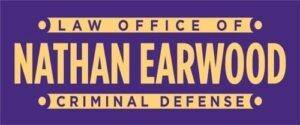Dealing with abuse or harassment from someone can be a frightening and overwhelming experience. If you find yourself in this situation, you may be wondering how to protect yourself and regain a sense of safety. One possible solution is to obtain a restraining order. The process of getting a restraining order can be confusing and intimidating, especially if you have never done it before. In this article, we’ll explain how to get a restraining order and what to expect from the process, so that you can take steps to protect yourself from abuse or harassment.
What is a Restraining Order?
A restraining order is a legal document that orders a person to stop certain behavior, such as contacting or approaching another person. The purpose of a restraining order is to protect the safety and well-being of the person who is seeking the order.
Two Most Common Restraining Orders
The two most common types of restraining orders are found in Chapter 50 of the North Carolina General Statutes: A Domestic Violence Protective Order (commonly referred to as a “50B”) and a No Contact Order (commonly referred to as a “50C”). A third, a temporary restraining order via Rule 65 of the North Carolina Rules of Civil Procedure will be discussed at a later time.
Domestic Violence Protective Orders
Domestic Violence Protective Orders usually start with a request to a judge or magistrate for an Ex Parte Domestic Violence Protective Order that grants a temporary order of protection until a court hearing occurs and a Judge can make a determination as to whether the temporary order should continue. The Court sets a return date for both sides to appear, for the victim to present evidence of domestic violence, and for the purported aggressor to present evidence to refute allegations.
A 50B requires, among other things:
- a personal relationship between victim and abuser (most commonly current or former spouses, persons who live together or have lived together, persons with a child in common, current or former household members, or persons of the opposite sex in a dating relationship); and
- An act of domestic violence, usually when someone attempts to cause or intentionally causes bodily injury, when someone causes a fear of imminent serious bodily injury or continued harassment inflicting substantial emotional distress, or sexual assault.
Domestic Violence Protective Order Forms of Relief
A successful 50B can grant a victim the piece of mind that the aggressor/abuser cannot interact with them without legal consequences. It allows for the victim to contact law enforcement immediately if there is a violation and, with probable cause, allows law enforcement to arrest the aggressor. Further, a 50B order can prevent an aggressor from possessing firearms, from coming to the victim’s workplace or place of schooling, grant the victim a vehicle or residence for temporary use, or grant temporary custody.
No Contact Orders
No contact orders are typically issued when there is NOT a personal relationship between the Parties as defined in a 50B and there has been unlawful conduct. Unlawful conduct is a very broad term in North Carolina that is typically reserved for nonconsensual sexual conduct, stalking, and harassment.
Stalking – as defined in N.C. Gen. Stat. § 14-277.3(c), occurs when on more than one occasion following or otherwise harassing another person without legal purpose with the intent to
- place the person in reasonable fear either for the person’s safety or the safety of the person’s immediate family close personal associates; or
- cause that person to suffer substantial emotional distress by placing that person in fear of death, bodily injury, or continued harassment and that in fact causes that person substantial emotional distress.
Harassing – as defined in N.C. Gen. Stat. § 14-277.3(c) means knowing conduct directed at a specific person that torments, terrorizes, or terrifies that person and that serves no legitimate purpose.
No Contact Order Forms of Relief
A successful 50C can prevent a Defendant from contacting, assaulting, communicating, or otherwise stalking/harassing the victim. While not as expansive as a 50B, it does allow for the victim to have some piece of mind that the aggressor’s future actions may be punished.
Final Thoughts
Obtaining a restraining order can be a complex and emotionally difficult process, but it can also be an important step in protecting yourself from abuse or harassment. If you are considering getting a restraining order, it is important to consult with an experienced attorney who can guide you through the process and help ensure that your rights are protected.
Need Legal Assistance?
If you or someone you know is dealing with abuse or harassment and need legal assistance, contact The Law Office of Nathan Earwood at 828-354-4300 or visit our website at wncdefenselawyer.com. Our experienced attorneys can provide the guidance and support you need to obtain a restraining order and protect yourself from harm.

